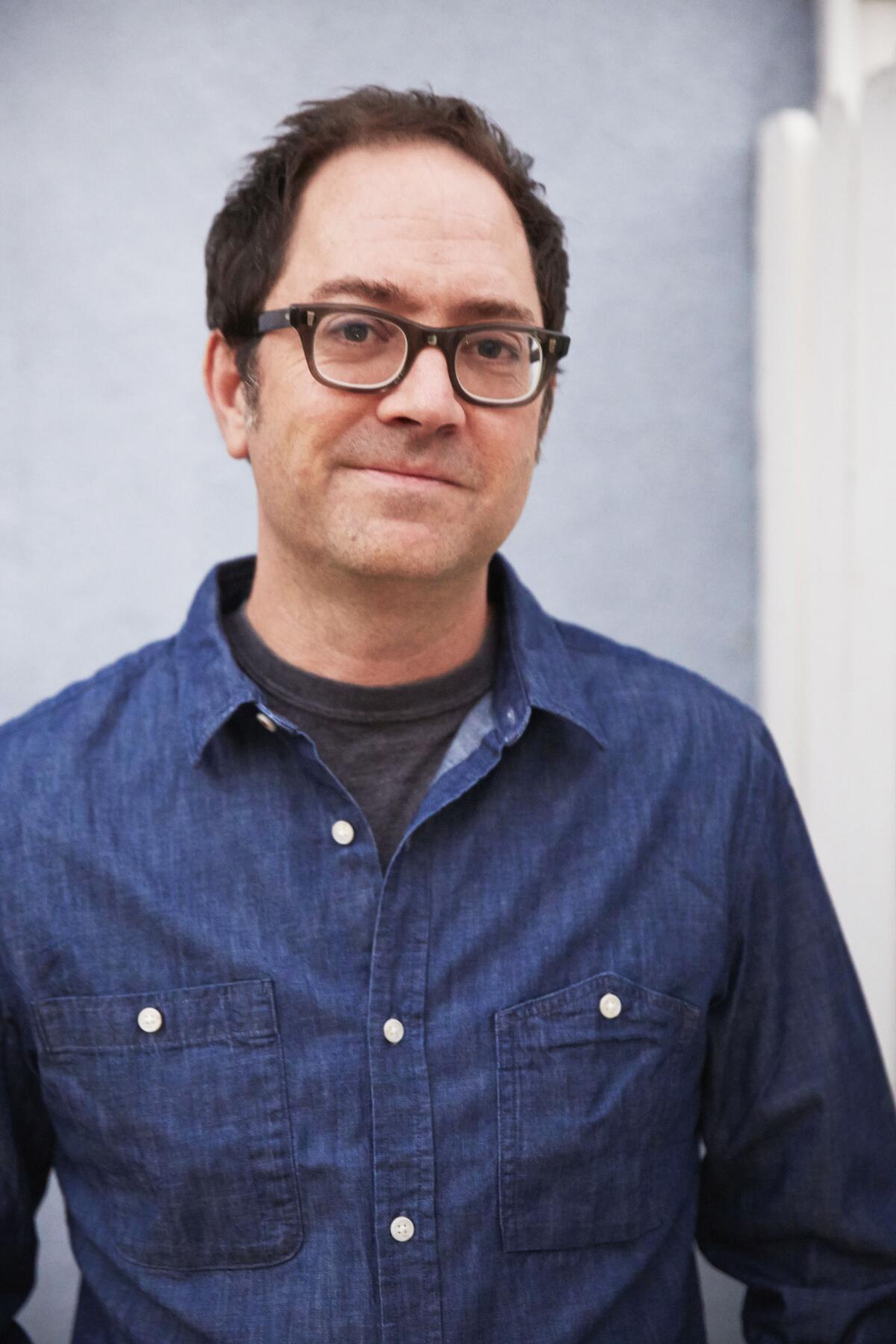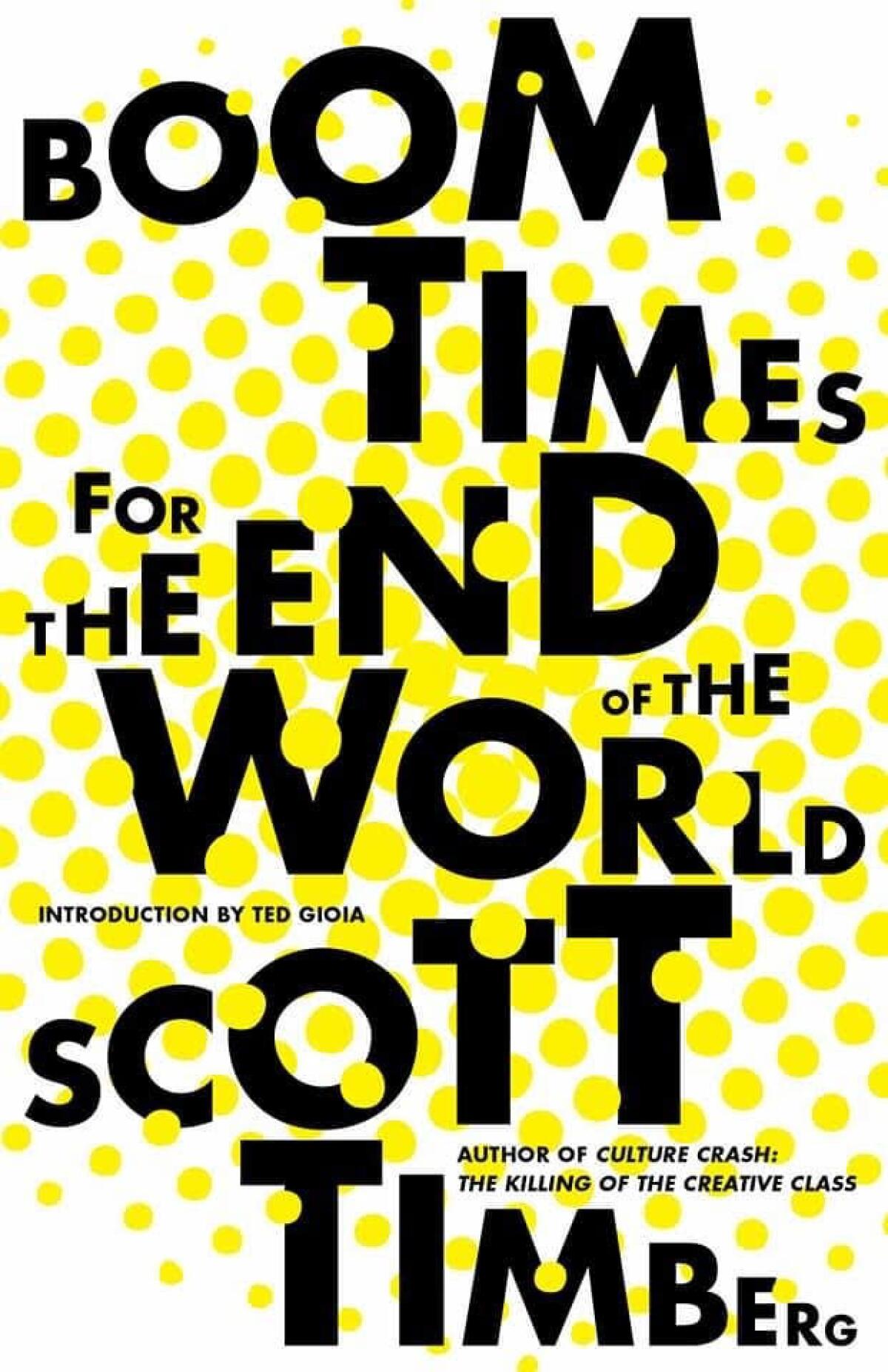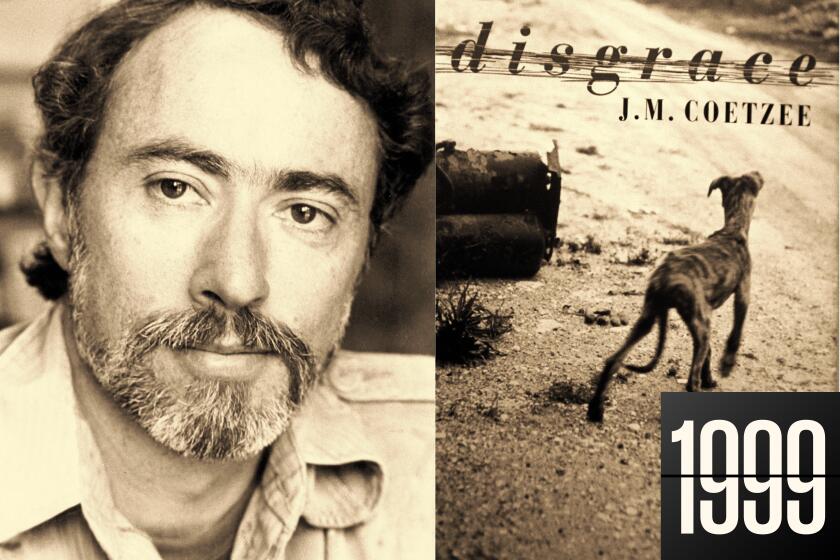Scott Timberg was a culture evangelist. Why his work lives on

On the Shelf
Boom Times for the End of the World
By Scott Timberg
Heyday: 304 pages, $20
If you buy books linked on our site, The Times may earn a commission from Bookshop.org, whose fees support independent bookstores.
To read Scott Timberg’s newly published collection of essays, “Boom Times for the End of the World,” is to experience both a rush of cultural stimulation and an overwhelming sense of sadness. Timberg, who loved Los Angeles and culture journalism with an intense passion, was among the essential chroniclers of the city. For New Times LA and then for the Los Angeles Times, he wrote of authors on the fringe and overlooked but vital corners of the city. Timberg drank up L.A.’s culture as only a thirsty outsider could (he was born in Palo Alto and raised in Maryland).
But his love wasn’t always requited. Despite highly original work and glowing performance reviews, Timberg was laid off from The Times in 2008, part of a wave of cutbacks at the paper and in the industry that hit culture journalists particularly hard. He became a reluctant member of the gig economy, trying to make ends meet in a city that was and is, despite or perhaps because of its many charms, very expensive to call home. He tried moving to Athens, Ga., with his wife and son, but L.A. was in his blood and he soon returned. He found freelance work. His two books were well received. But he never got all the way back, financially or otherwise. He suffered from depression, and in 2019, he killed himself by jumping from a pedestrian bridge near downtown. He was 50.
“Scott was just so present, and then he exterminated himself,” says Dana Gioia, former California poet laureate and a friend of Timberg for many years. “Why did he do that? Because the culture was exterminating too. He just went along with what the outer world was telling him.”
One man’s death may not have been preventable, but understanding what led to it offers hope for others.
“Boom Times” is both a celebration of a prodigious talent and a valediction for a lost soul. Timberg was drawn to subjects the average reader might not know, like John Rechy, the pugnacious, proudly narcissistic literary chronicler of L.A.’s gay subculture. “The novelist — whose small stature, impish smile, and barrel chest lend him the bearing of a well-exercised elf — treats writing like a big fight for which he’s constantly training,” he writes in the essay “The Romantic Egotist,” originally published in the New Times. Or the great jazz photographer William Claxton, who “did more than shoot striking photographs of great musicians,” Timberg writes in “Eye on Cool.” “He created the visual reality of West coast jazz, a whole new way to picture the art.” Timberg was one of those guys who could write knowledgeably about seemingly anything, though most of it was drenched in the culture of the city he loved.

I can relate to far too much of Timberg’s tragedy. In 2019 I was laid off from my job as a culture critic for the Dallas Morning News, along with most of the arts staff. I felt discarded and expendable, tossed aside by an institution I had served with pride for many years. And then it just kept raining. My life partner, Kate, was diagnosed with a terminal brain illness; she would be dead within 18 months. I was enraged at the world, and my own depression became the dominant voice in my head. It never said nice things.
My life and my headspace got better with time, as did the flow of freelance work. But when I read Timberg, and when I read about him — it’s with more than a passing sense of “There but for the grace of God go I.”
There is a bigger story here, one that Timberg both lived and chronicled. His 2015 book “Culture Crash: The Killing of the Creative Class” is a personal but also analytical and deeply reported elegy for a certain kind of work and those who do it. Timberg isn’t just talking about artists. As he writes in the “Boom Times” essay “Down We Go Together,” adapted from the book, “A more useful understanding of the creative class would include anyone who helps create or disseminate culture. So along with sculptors and architects, I mean deejays, bookstore clerks, theater set designers, people who edit books in publishing houses, and so on.”
We all want to recover from whatever malady brought us here, and we’re not about to blow this second chance by doing something careless.
He could have added culture journalists to the list. None of the above are extinct — yet. All have been dramatically marginalized by an increasingly automated society that purports to value culture but is decreasingly keen on spreading the good word, at least beyond the vogue for clickbait and shallow fandom.
Among Timberg’s biggest admirers is Steve Wasserman, the publisher of Heyday Books, which put out “Boom Times” (he also published “Culture Crash” when he was at Yale University Press). Wasserman met Timberg when he left a New York publishing career to take over the Los Angeles Times’ books coverage in 1996. He was promptly greeted with a Timberg piece in New Times, which asked, in Wasserman’s paraphrase, “What the hell is this egghead doing coming into town, and why is he not doing as much as his critics think he should be doing to promote Los Angeles literature?”
From there, Wasserman says, “Scott and I became allies in the project to elevate the general level of literary conversation in Los Angeles, each from our own vantage points.” They also became friends. So many who crossed Timberg’s path became his friends.
Wasserman remembers Timberg as a “patron saint of the displaced creative spirit.” He also believes the city Timberg loved is much poorer without him.
A guide to the literary geography of Los Angeles: A comprehensive bookstore map, writers’ meetups, place histories, an author survey, essays and more.
“East Coast snobs always dismissed Los Angeles, claiming the endless sunshine had baked the brains of the inhabitants,” Wasserman says. “Scott pushed back against that. He was a meteorologist who analyzed the shifts in the changing weather of the city’s culture. By that measure, he was remarkably accurate in his reportage. He captured a city and its shifting moods and performed an invaluable service to his readers.”
It’s hard to consider Timberg’s value to Los Angeles and not think of another late culture journalist, Jonathan Gold, the Pulitzer Prize-winning food and music critic for LA Weekly and the Los Angeles Times who died of pancreatic cancer in 2018. These were writers who peeled back reductive stereotypes of a city as culturally vibrant as any in the world. They did it with wit and verve. Mostly, though, they did it with love.
To read “Boom Times for the End of the World” is to experience that love anew — and to mourn the fact that Timberg is no longer here to feel it.
Vognar is a freelance writer based in Houston.
More to Read
Sign up for our Book Club newsletter
Get the latest news, events and more from the Los Angeles Times Book Club, and help us get L.A. reading and talking.
You may occasionally receive promotional content from the Los Angeles Times.








